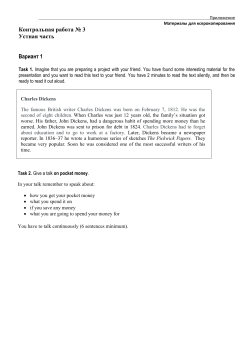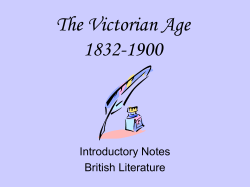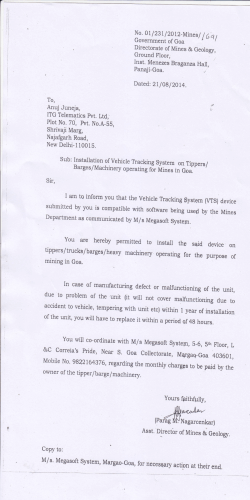
Document 393240
Life was very hard for poor people in the Victorian period. At the beginning of Queen Victoria’s reign (1837), some children did not even go to school! Poor children as young as four had to work to help support their families. Fish Seller Boy (aged 11) Match Seller Boy (aged 9) Countryside Factories Mills Children did various kinds of jobs. Many of the jobs they did were horrible and unsafe. Lets take a look at where poor children may have worked. Chimney Work House Service Coal Mines Some children worked in coal mines. These were extremely dangerous places to work; roofs sometimes caved in, explosions happened and workers got all sorts of injuries. There were very few safety rules. One of the common dangers was shifting coal and to do so the children had to bring it through the tunnels and small shafts. This would require the children to bend down and this work disabled many growing children. Older children might be employed as "coal bearers" carrying loads of coal on their backs in big baskets. Younger children often worked as "trappers" who opened and shut doors to allow air to circulate through the tunnels. Many factory workers were children. They worked long hours, for very low wages, and were often treated badly by the supervisors or overseers. Sometimes the children started work as young as four or five years of age. Their work was unsafe because there were no guards or fences around the machines to stop accidents happening. As with mines and factories, thousands of children also worked in cotton mills. Here too the conditions were unpleasant. Children spent most of their working hours at machines with little time for fresh air or exercise. Most mine, factory and mill owners did not think anything was wrong with giving jobs, particularly nasty jobs, to children. There were no laws to protect children as there are today. Many fell ill or had serious accidents. Some children were scalped when their hair was caught in the machine, hands were crushed and some children were killed when they went to sleep and fell into the machine. This is a photograph of a Chimney Sweeper Boy; you’ll find out more about him later. Some orphans and homeless children such as Chimney Sweepers were even sold to employers. Children were cheap and they could not complain. Boys like the one in the photo were forced through the narrow winding passages of chimneys in large houses in order to clean them. Children suffered many cuts, grazes and bruises on their knees, elbows and thighs. It was a dirty and dangerous job. Many girls from poor families would go in to service. This meant that they would work for the local gentry in the big houses, or for anyone who employed servants; they were paid very little money. Many servants had unpleasant jobs to do like cleaning out fireplaces, and often had to start work very early in the morning. This Servant Girl is aged 12 Poor families who lived in the countryside were also forced to send their children out to work. Seven and eight year olds could work as bird scarers or stone pickers, out in the fields from four in the morning until seven at night. Older children worked in as casual labourers. As you now know, the working life of children in Victorian Britain was harsh; often very dangerous and always badly paid. There are records which document the experience of children at this time which come from the reports the children gave to the employment commissions. These are the reports from three children, lets learn about their experiences: Name: Tom Fisher Name: Sarah Carpenter Name: Joseph Hebergam Age: 10 Age:11 Age: 9 Job: Chimney Sweeper Job: Factory Worker Job: Cotton Worker Date: 1851 Date: 1849 Date: 1847 For all the injustice that went on, it is fair for us to think that nobody cared for these children. However, there were some people who fought to change things. Lets meet them … 1. Lord Shaftesbury knew that it was wrong to use children as cheap labour and wanted to bring in laws to stop this practice. He encouraged Inspectors, (called Commissioners), to go round Britain and collect evidence from working children themselves. Their reports were debated in Parliament. The man with a walking stick is Lord Shaftesbury talking to a child down a mine Lord Shaftesbury (1801-1885) 2. Dr Barnado wanted to provide homes for homeless and abandoned children. He took photographs of the children he rescued from the streets and used them to persuade rich people to collect money for his Charity. Dr Barnado believed all children should be looked after and receive some education. The picture shows Dr Barnado visiting children who lived on the streets Dr Thomas Barnado (1845-1905) 3. Charles Dickens (1812-1870) Charles Dickens did much to highlight the difficulties faced by poor children. Perhaps you have read or seen his books which have been adapted for TV and Film? Charles Dickens would base his ideas on the social conditions surrounding him. He sympathized for all the people who were neglected and unloved. His main focus was how parts of England were poverty stricken and before writing his novels, he visited the places that he based his stories on. Charles Dickens was aware of the cruelties children were suffering, and this we can see in many of his books. Throughout Queen Victoria's reign, new laws were passed to make it illegal to employ young children. 1841 Mines Act - No child under the age of 10 to work underground 1868 Agricultural Gangs Act - No child under the age of 8 to be employed in a gang of farm workers 1870 Education Act – Education was compulsory for all children aged 510, although it was not free until 1891 1874 Factory Act - No child under the age of 10 is to be employed in a factory 1875 Climbing Boys Act - Illegal to send boys up chimneys However there were still many children, over the age of 9, at work when Queen Victoria died in 1901. Today, fortunately there are strict laws on how old children have to be to have a job and about the hours they can work.
© Copyright 2025





















